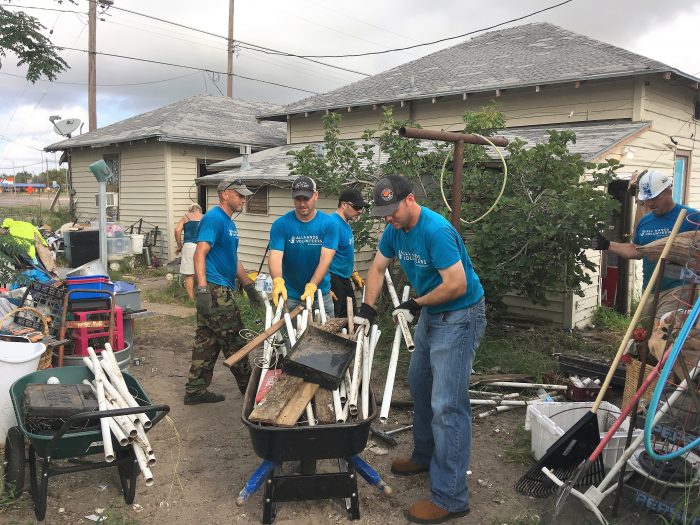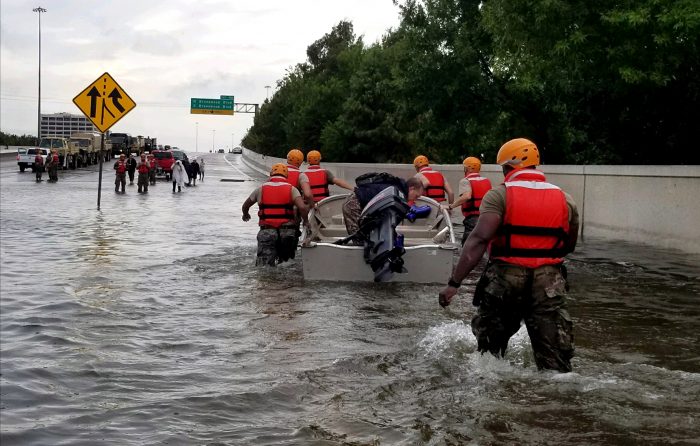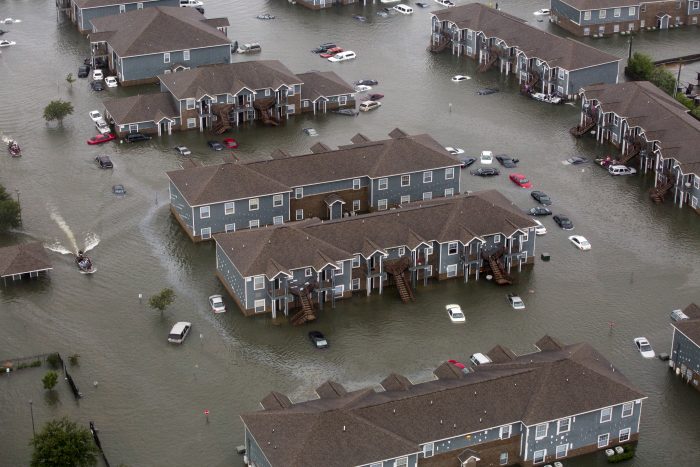Hurricane Harvey Recovery: One Year Later
As we mark the one-year anniversary of the day Hurricane Harvey first made landfall in Texas, it is telling that our work has, in some cases, really just begun. The Center for Disaster Philanthropy’s (CDP) Hurricane Harvey Recovery Fund was created to address the mid- to long-term recovery needs of the Texas Gulf Coast, and, […]

As we mark the one-year anniversary of the day Hurricane Harvey first made landfall in Texas, it is telling that our work has, in some cases, really just begun. The Center for Disaster Philanthropy’s (CDP) Hurricane Harvey Recovery Fund was created to address the mid- to long-term recovery needs of the Texas Gulf Coast, and, one year in, we’re seeing that the needs are still significant.
Some communities are just now moving into the recovery phase of this disaster. The FEMA case management grants were just awarded in May, so the case management process in many areas is woefully behind where it should be. Though some nonprofit organizations and long-term recovery groups have stepped up to try to fill the gaps caused by this delay, there is still much work to be done to make up for lost time. As new case managers have now come online and have begun to integrate into the long-term recovery process, we have seen the number of cases increase considerably, which means that the true impact on many communities is just now becoming apparent.
Here are the primary issues we continue to see developing throughout the Harvey-affected Texas Gulf Coast:
- Housing– There is significant need for repair, rebuild and more affordable housing (particularly for renters and low-income families).
- Economic/Community Development– Those communities (outside Houston and Harris County, especially) that were most affected have seen a dramatic decrease in businesses, jobs and population (likely the result of lost employment and limited housing).
- Health/Behavioral Health– There are signs of PTSD with children in schools and signs of additional domestic issues with families. Additionally, many of those living at or below poverty levels have put off addressing chronic health issues because of financial strains. In some rural communities where access to healthcare was limited prior to the storm, Harvey has only exacerbated the problem.
- Legal Assistance– Those who need help navigating the complicated assistance process, those with generational property deed issues and/or those with fragile document status need significant legal resources to support their recovery.
- Environmental Impact– Many of the affected communities are hubs for the petrochemical industry. The impact of the storm on this industry and the environment surrounding them is just now surfacing. A “second-storm” of air pollution has recently been reported by the state.
We continue to work closely with Dr. Shao-Chee Sim of the Episcopal Health Foundation (EHF) to access data and seek guidance on specific gaps in funding. We have also helped inform Dr. Sim’s work as EHF and the Kaiser Family Fund review and reassess of the status of recovery one-year post-Harvey.
We also use information gathered by the investigative journalists at the Texas Tribune to inform our grantmaking. They provide in-depth analysis of the recovery landscape and the impacts of Hurricane Harvey on several important issue areas, and track funds distribution from all sources – philanthropic, federal, state and local.
To date, we’ve awarded grants totaling more than $6 million from the CDP Hurricane Harvey Recovery Fund to support long-term recovery, preparedness and resilience along the Texas Gulf Coast.
Additional rounds of grant are slated for December 2018 and March 2019.
At CDP, we’re committed to supporting long-term recovery and to telling the story of the needs of communities affected by disaster way beyond immediate response. We continue to focus on educating and informing the public about the long-term recovery focus of the Hurricane Harvey Recovery Fund, while highlighting the impact thousands of donors have through their strategic giving.
Please join us for a “Hurricane Harvey: State of Recovery” webinar on August 28. The webinar will feature some of our funding and assessment partners to help inform attendees about the need to address the very long-term process of building community resilience after a major disaster.
Though much work has been done and there is much still to do, the CDP is committed for the long-term. We are not simply funders here in Texas. We are also partners, collaborators and an information source to support a full recovery and improved resiliency in Texas.
More like this

Partnering for Hurricane Preparedness in Texas

